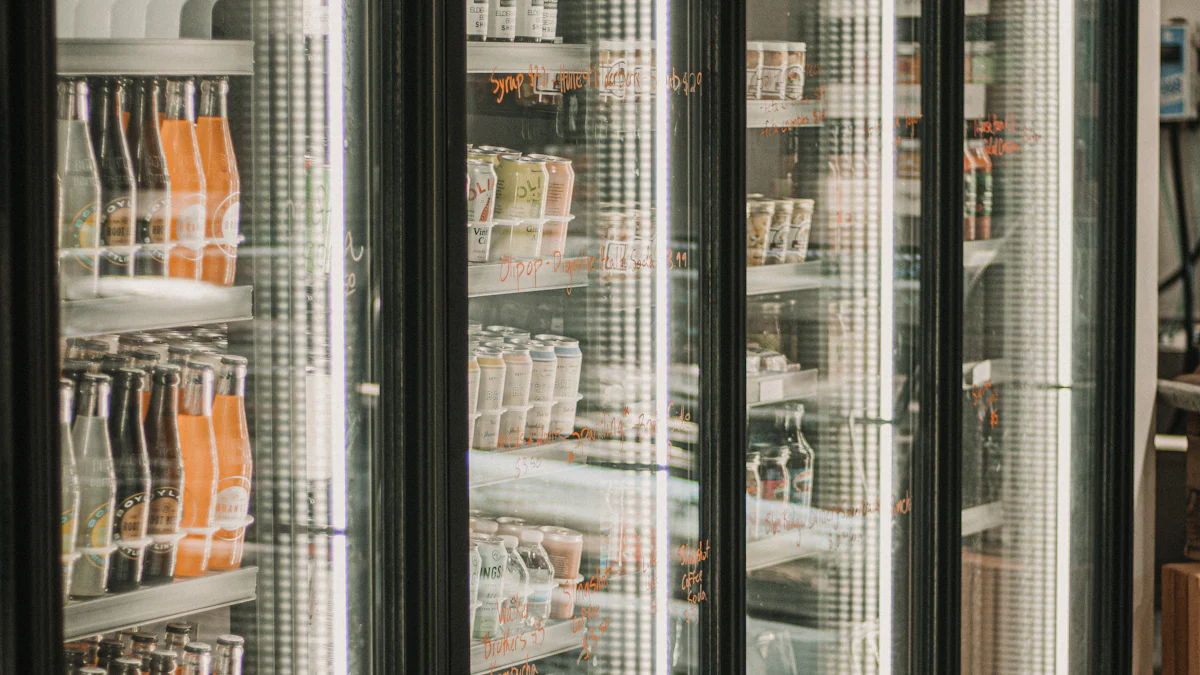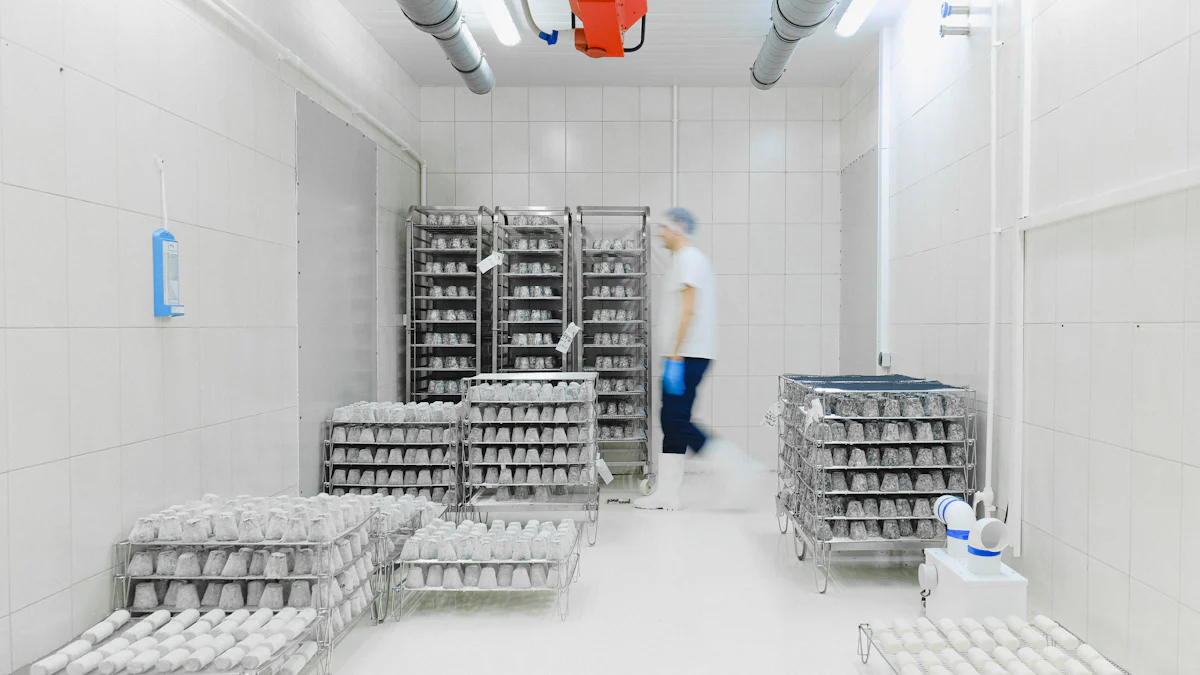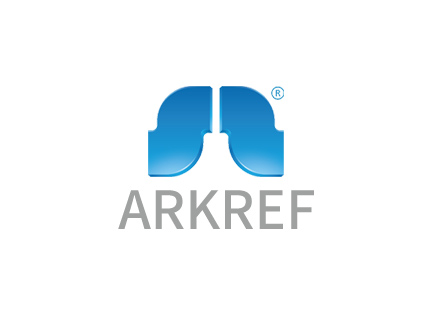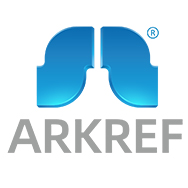5 Simple Ways to Cut Costs in Cold Room Storage

Reducing costs in cold room storage is essential for maintaining profitability. Energy expenses can consume up to 18% of a company’s revenue, with refrigeration alone accounting for 80% of total energy use. By adopting energy saving tips, you can significantly lower these costs while improving operational efficiency. For example, facilities like agricultural co-op cold storage have achieved up to 50% energy savings through efficient practices. Additionally, strategies like better insulation and LED lighting not only cut costs but also reduce greenhouse gas emissions. Implementing these measures ensures long-term savings and a more sustainable operation.
Key Takeaways
Clean equipment like condensers and coils often to keep them working well and lasting longer.
Open doors less and use auto-closers to keep the cold in and save energy.
Use LED lights and motion sensors to use less energy and make less heat.
Keep the right temperature and airflow by not overcooling and keeping vents open.
Use smart tools like IoT sensors to check conditions live and save energy automatically.
Regular Maintenance for Cool Room Efficiency

Inspect and Clean Equipment
Check for Dust and Debris on Condensers
Keeping condensers clean is crucial for maintaining the efficiency of your cold room. Dust and debris can accumulate on the condenser coils, reducing their ability to release heat. This forces the refrigeration system to work harder, increasing energy consumption. Regularly inspect the condensers and remove any buildup to ensure optimal performance. A clean condenser not only improves energy efficiency but also extends the lifespan of your equipment.
Clean Evaporator Coils Regularly
Evaporator coils play a vital role in cooling your cold storage. Over time, dirt and frost can accumulate on these coils, hindering their ability to absorb heat. Cleaning them regularly prevents this buildup and ensures consistent cooling. Neglecting this step can lead to icing issues, which may disrupt airflow and reduce the overall efficiency of your refrigeration system.
Schedule Routine Professional Inspections
Identify and Fix Leaks or Faulty Components
Professional inspections help you identify potential problems before they escalate. Issues like refrigerant leaks, faulty wiring, or defective thermostats can significantly impact the performance of your cold room. Addressing these problems early prevents costly repairs and ensures your refrigeration maintenance stays on track.
Ensure Refrigerant Levels Are Optimal
Maintaining the correct refrigerant levels is essential for efficient cold storage. Low refrigerant levels can reduce cooling capacity, while overcharging can damage the system. Schedule inspections based on your operational needs, such as the seasonality of your stored goods, to keep your system running smoothly.
Replace Worn-Out Seals and Gaskets
Prevent Cold Air Leakage
Damaged seals and gaskets allow cold air to escape, forcing your refrigeration system to work harder. Inspect these components regularly and replace them when necessary. This simple step prevents air leakage and reduces energy waste.
Improve Overall Efficiency
Replacing worn-out seals not only prevents air exchange but also improves the overall efficiency of your cold room. Proper sealing ensures consistent temperatures, which helps maintain the quality of stored goods and reduces energy costs over time. Opt for durable, corrosion-resistant materials to minimize future maintenance needs.
Tip: Modular cold rooms make it easier to replace faulty components, saving time and reducing repair costs.
Efficient Door Management in Cold Rooms
Minimize Door Openings
Train Staff to Open Doors Only When Necessary
Frequent door openings in a cold room allow warm air to enter, which disrupts internal temperatures and forces the refrigeration system to work harder. Training your staff to open doors only when necessary can significantly reduce energy waste. Encourage them to plan their tasks efficiently to minimize the time doors remain open. This simple practice can lead to noticeable energy savings and improve cool room efficiency.
Use Strip Curtains or Air Curtains
Installing strip curtains or air curtains is an effective way to maintain internal temperatures during door openings. PVC strip curtains act as a thermal barrier, reducing heat transfer between the cold room and the external environment. They are especially useful in facilities with frequent loading and unloading activities. Air curtains, on the other hand, create an invisible shield of air flow that prevents warm air from entering. Both solutions are cost-effective and help retain cold air, reducing the workload on your refrigeration system.
Install Automatic Door Closers
Reduce Human Error in Leaving Doors Open
Automatic door closers eliminate the risk of human error by ensuring doors close immediately after use. This prevents unnecessary cold air loss and maintains the desired temperature inside the cold room. By automating this process, you can reduce energy consumption and improve operational efficiency.
Maintain Consistent Internal Temperatures
Consistent internal temperatures are critical for preserving stored goods. Automatic door closers help achieve this by minimizing temperature fluctuations caused by prolonged door openings. This not only saves energy but also extends the lifespan of your refrigeration equipment by reducing its workload.
Monitor Door Seals
Check for Gaps or Damage
Door seals play a vital role in maintaining an airtight closure. Over time, wear and tear can cause cracks or gaps, leading to air leakage. Regularly inspect door seals to identify any damage. Prompt repairs or replacements prevent energy loss and ensure the cold room operates efficiently.
Replace Seals to Prevent Air Exchange
Replacing damaged seals is essential for preventing air exchange between the cold room and its surroundings. Properly sealed doors maintain stable temperatures and reduce the strain on your refrigeration system. This simple maintenance task can lead to significant energy savings and improve the overall performance of your cold storage facility.
Tip: Combine regular door seal inspections with other maintenance practices to maximize energy efficiency and extend the life of your equipment.
Optimized Lighting for Energy Efficiency
Switch to LED Lighting
Reduce Heat Emission
Switching to LED lighting in your cold room can significantly reduce heat emission. Unlike traditional incandescent bulbs, LEDs convert 80% of their input power into light energy rather than heat. This efficiency minimizes the additional cooling load on your refrigeration system, helping you maintain consistent temperatures without overworking the equipment.
Lower Energy Consumption
LED lighting offers substantial energy savings compared to traditional options. For instance, a 60-watt incandescent bulb can be replaced by an LED that uses only 8 to 10 watts. This translates to energy savings of 70-80%, which is critical for improving energy efficiency in cold storage environments. By reducing electricity usage, you can lower operational costs while maintaining optimal lighting conditions.
Use Motion Sensors
Turn Lights On Only When Needed
Motion sensors are an excellent addition to your cold room lighting system. These sensors activate lights only when someone enters the space, ensuring that energy is not wasted when the room is unoccupied. This feature is particularly useful in areas with infrequent access, such as storage zones or auxiliary rooms.
Avoid Wasting Energy in Unused Areas
Integrating motion sensors with LED lighting fixtures enhances energy efficiency. These sensors prevent unnecessary energy consumption by automatically turning off lights in unused areas. This approach not only reduces electricity bills but also extends the lifespan of your lighting system.
Position Lights Strategically
Ensure Proper Illumination Without Overuse
Strategic placement of lights in your cold room ensures adequate illumination without overusing energy. Install LED luminaires in key areas to maximize coverage while minimizing the number of fixtures required. Proper positioning reduces the risk of dark spots, which can lead to inefficient cooling.
Avoid Shadows That Can Lead to Overcooling
Shadows in a cold room can cause uneven cooling, as the refrigeration system may overcompensate for poorly lit areas. To prevent this, position lights to eliminate shadows and ensure uniform illumination. Combining this with an automatic lighting system, such as presence sensors and timers, further optimizes energy usage and reduces waste.
Tip: Always switch off lights in unoccupied rooms to save energy and reduce heat buildup.
Proper Temperature and Airflow Management in Cold Rooms
Set the Right Temperature
Avoid Overcooling Beyond Necessary Levels
Overcooling wastes energy and increases operational costs. Set your cold room to the optimal temperature for the goods you store. For example, storing meat at -1°C to 3°C ensures freshness without unnecessary cooling. Avoid setting temperatures lower than required, as this strains your refrigeration system and raises energy consumption. Regularly monitor your settings to maintain efficiency.
Match Temperature to Stored Goods
Different products require specific temperature and humidity levels. Matching these conditions to your inventory ensures quality and reduces spoilage. Use the table below as a guide for proper temperature and humidity settings:
Product | Temperature | Relative Humidity |
|---|---|---|
Meat | -1°C to 3°C | 85-95% |
Fish | 0°C to 4°C | 65-70% |
Dairy | 2°C to 4°C | 65-70% |
Vegetables, leafy greens | 2°C to 4°C | 90-100% |
Bananas | 10°C to 15°C | 80-85% |
Adhering to these ranges ensures effective temperature management and preserves product quality.
Ensure Proper Air Circulation
Avoid Blocking Vents with Stored Items
Blocked vents disrupt airflow and create uneven cooling. Keep storage areas clear to allow air to circulate freely. This prevents cold spots and ensures consistent temperatures throughout the room. Organize your inventory to maintain open pathways near vents.
Use Fans to Distribute Cold Air Evenly
Fans improve airflow and help distribute cold air evenly. Ceiling fans or strategically placed floor fans can prevent temperature imbalances. For better results, consider creating cross-ventilation by positioning fans to direct air across the room. These energy efficient practices reduce strain on your refrigeration system and maintain uniform cooling.
Monitor and Adjust Humidity Levels
Prevent Frost Build-Up
Excess moisture leads to frost accumulation, which blocks airflow and reduces cooling efficiency. Install dehumidifiers to control humidity levels and prevent frost. Regularly check door seals to stop humid air from entering. Maintaining proper humidity levels minimizes frost and keeps your cold room running efficiently.
Maintain Product Quality
Humidity control is essential for preserving stored goods. High humidity promotes microbial growth, which damages products and increases maintenance needs. For example, leafy greens require 90-100% humidity, while dairy products need 65-70%. Use commercial dehumidifiers to maintain the ideal balance for your inventory. This ensures product quality and reduces energy waste caused by improper temperature and humidity control.
Tip: Conduct routine checks on defrost cycles and airflow paths to prevent cold spots and maintain consistent conditions.
Smart Technology Upgrades for Energy Saving
Install Energy-Efficient Refrigeration Systems
Invest in High-Efficiency Compressors
Upgrading to energy-efficient refrigeration equipment can significantly reduce energy costs. High-efficiency compressors are a key component of these systems. They consume less energy while maintaining optimal cooling performance. These compressors also operate more quietly and last longer, reducing maintenance needs. By investing in high-quality insulation and sealing gaps, you can further enhance the efficiency of your refrigeration systems. These upgrades not only lower energy usage but also align with sustainability goals by reducing greenhouse gas emissions.
Use Variable Speed Drives for Better Control
Variable speed drives (VSDs) allow compressors to adjust their speed based on cooling demand. Unlike fixed-speed compressors, which run at a constant rate, VSDs modulate their speed between 1,600 and 5,000 rpm. This flexibility improves temperature stability and reduces energy usage. For example, VSDs quickly respond to temperature changes, ensuring consistent cooling for sensitive products like dairy or meat. This technology also minimizes wear and tear, extending the lifespan of your refrigeration systems.
Use IoT Sensors and Monitoring Systems
Track Temperature and Humidity in Real-Time
IoT sensors provide real-time data on temperature and humidity levels in your cold room. These sensors help you monitor energy usage and ensure optimal conditions for stored goods. For instance, they can detect temperature fluctuations early, preventing spoilage and reducing waste. Enhanced inventory management becomes possible with this technology, as you can track cooling performance and adjust settings remotely.
Receive Alerts for Maintenance Needs
IoT sensors also send alerts when maintenance is required. This proactive approach minimizes equipment downtime and repair costs. By addressing issues early, you can maintain the efficiency of your refrigeration systems. Additionally, these sensors improve food safety by ensuring consistent storage conditions. Their ability to generate key data makes them an essential tool for modern cold room operations.
Automate Energy Management
Optimize Cooling Cycles
Automation plays a crucial role in optimizing cooling cycles. By using automated systems, you can maintain consistent temperatures and reduce energy waste. For example, pre-cold rooms and antechambers help minimize temperature differences during loading and unloading. These measures enhance cooling efficiency and lower energy usage. Automation also ensures that cooling cycles run only when necessary, further cutting energy costs.
Reduce Energy Waste During Off-Peak Hours
Automated energy management systems adjust cooling operations based on demand. During off-peak hours, these systems reduce energy usage without compromising product quality. This approach not only saves energy but also extends the life of your refrigeration systems. By integrating automation with IoT sensors, you can monitor energy usage and make data-driven decisions to improve efficiency.
Note: A recent case study showed that using variable speed technology in cold rooms achieved 13.6% energy savings compared to fixed-speed solutions. This also reduced ownership costs and environmental impact, making it a smart investment for long-term savings.
Reducing costs in cold room storage requires a combination of smart strategies and consistent efforts. Focus on regular maintenance, efficient door management, optimized lighting, proper temperature and airflow management, and smart technology upgrades. For example, facilities like agricultural co-op cold storage achieved a 50% energy savings by installing solar-powered refrigeration panels. Implementing these tips ensures immediate savings and long-term benefits. Regular cleaning, equipment calibration, and preventative maintenance schedules further enhance efficiency. By adopting these practices, you can maintain optimal performance, reduce energy waste, and protect your bottom line.
FAQ
What is the most cost-effective way to maintain cold rooms?
Regular maintenance is the most cost-effective approach. Clean condensers and evaporator coils, replace worn-out seals, and schedule professional inspections. These steps ensure your cold rooms operate efficiently, reducing energy waste and extending equipment lifespan.
How can I prevent energy loss in cold rooms?
Prevent energy loss by minimizing door openings, using strip curtains, and installing automatic door closers. Regularly inspect door seals for gaps or damage. These measures help maintain consistent temperatures and reduce the workload on your refrigeration system.
Why is airflow important in cold rooms?
Proper airflow ensures even cooling and prevents cold spots. Blocked vents or poor circulation can strain your refrigeration system. Keep vents clear and use fans to distribute cold air evenly. This improves efficiency and maintains the quality of stored goods.
Are LED lights suitable for cold rooms?
Yes, LED lights are ideal for cold rooms. They emit less heat and consume less energy compared to traditional bulbs. Motion sensors can further enhance efficiency by ensuring lights are only on when needed, reducing energy waste.
How does smart technology improve cold room efficiency?
Smart technology, like IoT sensors, tracks temperature and humidity in real-time. Automated systems optimize cooling cycles and reduce energy waste during off-peak hours. These upgrades improve efficiency, lower costs, and ensure consistent storage conditions.
See Also
Essential Strategies for Effective Cold Room Temperature Management
Constructing a Cold Room to Optimize Operational Efficiency
Revolutionizing Goods Storage Through Innovative Cold Room Solutions
Creating a High-Performance Cold Room for Slaughtering
Addressing Storage Challenges with Versatile Cold Storage Solutions

